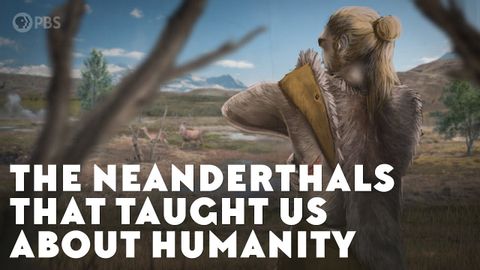教会我们人类的尼安德特人(The Neanderthals That Taught Us About Humanity)
joey joey 發佈於 2021 年 05 月 03 日  沒有此條件下的單字
沒有此條件下的單字US /ˈɛvɪdəns/
・
UK /'evɪdəns/
- n. (u.)證據;證據 (法律)
- v.t.表明;證明
- n. (c./u.)條件;條款;期間;期限;學期;術語;關係;項;妊娠期;任期
- v.t.命名
US /ˈɪmˌpækt/
・
UK /'ɪmpækt/
- n.衝擊;碰撞
- v.t./i.撞擊(某人或物);影響;阻生
US /kəmˈpæʃən/
・
UK /kəmˈpæʃn/

